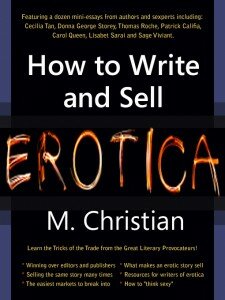This month we introduce our newest contributor to WriteSEX – Stella Price. Stella is half the duo of Stella and Audra Price, award winning romance authors who construct characters, worlds and more that draw the reader in. She’ll be joining us at DragonCON 2011 on Friday Night as we host the WriteSEX Pane l. Her first article on world building follows.
 World Building. Most think it’s just for epic fantasy, or even dark fantasy. As a paranormal romance author, world building is, as they say, 9/10 of the law. Without it, characters are not believable, nor is the story in general. In my coming posts we will talk about suspension of disbelief, character development, and building a world from the ground up, but for now I want to talk about the necessity of world building, in any story setting.
World Building. Most think it’s just for epic fantasy, or even dark fantasy. As a paranormal romance author, world building is, as they say, 9/10 of the law. Without it, characters are not believable, nor is the story in general. In my coming posts we will talk about suspension of disbelief, character development, and building a world from the ground up, but for now I want to talk about the necessity of world building, in any story setting.
Fantasy, Paranormal, Horror, Historical, contemporary, BDSM… Name a genre and it’s quite possibly the most important element because this is what sets your stage, and what hooks your reader. Without a believable situation and background, it really isn’t a story.
In work, even if you’re working from a contemporary setting, it’s the details that matter in making your book believable and unique. You cannot write a story without details right? Well details are a major element of world building.
World building, when done correctly, and not half assed, makes your story richer, full of depth and allows the reader to be immersed in the story you created. As an author, you strive to engage your reader on a level deeper than a letter to penthouse, right? Without the connection you can be damn sure that next story you put out won’t be on the reader’s auto buy list.
There are levels to world building. Light world building, where the author uses already accepted places, subjects and morae’s to make the reader feel at ease, and just adds details to enrich the experience. Then there are those that do it with a more heavy hand, where they take ideas already in play and twist them into other things, be it alternate history or alternate universes, and then there is the extreme of building the world from roots to the sky. None of these are wrong, and all have their pros and cons.
Light world building is what you see a lot of in Para romance. They use the contemporary setting, and then focus on the characters and their societies to build up the mythology. Kresley Cole with her Immortals After Dark series and Gena Showalter with her Lords of the Underworld series are prime examples.
A more heavy hand twists to alternate history, or alternate universes, and focuses on the characters and Society like the lighter hand does, but puts emphasis on the background and events that brought about the current status quo. Allison Pang’s Brush of Darkness is a great example of this as well as Lia Habel’s forthcoming Ya Dearly Departed and Meljean Brook’s Iron Seas books. These books rocked alternate histories and timelines, to give the books depth and dimension.
Extreme world building, Like Gail Martin’s Summoner Series or Anne Bishop’s Black Jewels series is the very top of the world building ladder. You see this most in High fantasy and Scifi, but it is slowly making its way into the mainstream of romantic fiction with series like Michele Armstrong’s Settler’s Mine series. I look forward to seeing others.
It’s your duty as the author to know what kind of world building you are capable of, so that you don’t short change your readers or your story. Getting into a groove with your writing is paramount and the sooner you realize where you sit in the world building arena the faster you will realize just how important it is to your work.
Stella Price
Award winning best selling author
www.stellaandaudra.com
Podcast: Play in new window | Download












Recent Comments